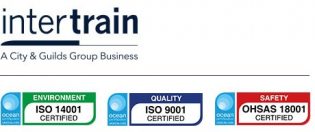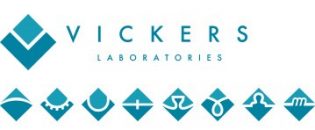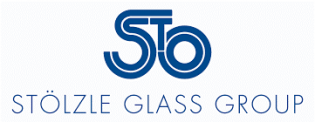You wouldn’t set out on a journey without thinking about the end destination. If you did, you wouldn’t know which bus to get on, which direction to walk in, or which roads to take. You wouldn’t know how long the journey would be or what you’d need to bring with you.
It’s the same in business. A company needs a vision of where it wants to be, so it can create a strategy to get there. A vision gives you direction and helps individual employees understand how their roles fit with the big picture.
When a strategy is developed with a vision in mind, it is more likely to be successful – if you know where you are heading, you can plan the route. You can figure out the best way to get there, understand what you might need for the journey, and identify any potential obstacles that could get in your way.
How to get more from your SWOT analysis
Businesses have been using SWOT as a strategic planning tool for decades. A SWOT analysis can help you make better decisions and prevent you from making costly mistakes.
If you’ve never conducted a SWOT analysis before, it consists of four parts: Strengths (S), Weaknesses (W), Opportunities (O) and Threats (T).
Strengths and weaknesses relate to internal factors – things you have control over. For example, one of your strengths might be winning new business, while one of your weaknesses could be customer retention.
Opportunities and threats relate to external factors – things you might be able to influence but can’t control. For example, opportunities could include new technologies or government funding, while threats might be supplier price increases or changes in consumer behaviour.
However, completing a SWOT analysis is only part of the puzzle. The real value comes from understanding what it’s telling you.
Let’s say your strength is winning new business – your sales team are constantly hitting their targets.
That’s great, but you need to understand why.
Is it because your sales manager is brilliant at getting the most from the team?
Is it because your sales training programme is exceptional?
Is it because your marketing team are doing a great job of attracting the right enquiries?
If you understand the why, you can use the information to maintain your strengths and build on them. For example, if your sales success is down to a brilliant sales manager, how can you train other sales managers to the same standard?
Weaknesses work in the same way. If you understand why something is a weakness, you can put steps in place to remove or improve it.
For example, let’s say one of your weaknesses is poor customer retention – hardly any of your customers renew their contracts after the initial term. You need to find out why.
Is it because your sales team are overpromising and underdelivering?
Are you offering huge onboarding discounts, then hiking the prices up?
Are your customer service team failing to follow up with new customers?
Is your renewal process starting too late – have customers already gone elsewhere?
If you don’t look at the why, it can be easy for strengths to dwindle, weaknesses to get worse, opportunities to be missed, and threats to become major problems.
The power of a PESTLE analysis
When you’re conducting your SWOT analysis, PESTLE can be a great tool for identifying opportunities and threats.
PESTLE is a simple framework that is easy to implement into your strategic plan. It also provides you and your team with a greater understanding of how external factors can potentially affect your business.
The framework looks at six areas that can impact you – Political (P), Economic (E), Sociological (S), Technological (T), Legal (L) and Environmental (E).
Political
These are the external political factors that could impact your organisation. These can include government policies, foreign trade and foreign relations, political instability, tax policy, regulations, funding initiatives and so on.
They could be at a global level, such as the impact of war in Ukraine, they could be national, such as Brexit, or they could be local, such as council cuts to funding or increases in business rates.
Economic
These are the factors that can impact the economy your organisation operates in. They can include rising inflation rates, economic growth, changes in consumer spending, or increased labour costs.
As with political factors, economic factors can be local, national or global.
Sociological
Sociological factors consider the greater social environment. This can relate to population growth and changes in demographics, or cultural barriers and workforce trends.
Sociological factors also look at shifts in customer views, opinions, and sentiment. Ethics can play a big part in customer behaviour – things such as fair-trade practices, modern slavery policies, and corporate social responsibility can influence their purchasing decisions.
Technological
Consider how emerging and maturing technologies could impact your business. Do they provide opportunity, or do they pose a threat? Examples include cryptocurrencies, new AI tools, and work-from-home technology.
Cybersecurity is another huge consideration – cybercrime is always on the rise and arming yourself against it is critical.
Legal
Legal factors are rules, regulations, and legislation that might impact your business. These can include consumer protection laws, employment law, or sector-specific regulations.
GDPR is a good example of a recent change in law that affected businesses across almost every sector.
Environmental
Environmental factors are things like weather (floods, hurricanes etc), geography, climate change, and health emergencies (for example, the COVID-19 pandemic).
Organisations should consider the short-term and long-term impacts of these environmental factors.
Once you have conducted your SWOT and PESTLE analysis, you can use the data to support your business strategy and achieve your long-term vision.
You can then start focusing on your tactical and operational plans, setting shorter-term goals and individual objectives, and taking action to achieve your vision.
Developing Strategic Leaders
As a manager or leader, there’s always something new to learn or a skill you can improve and develop. Organisations need to support managers and leaders in this development, but you also need to invest in yourself.
Getting formal leadership and management training will not only help you build your leadership skills, it will also help you grow in confidence, and increase your chances of career progression.
Alternative Partnership delivers ILM-accredited Leadership and Management training programmes to support you and your teams in gaining formal, nationally recognised qualifications.
Find out more about our current ILM courses here or get in touch to discuss how our services could benefit you.












